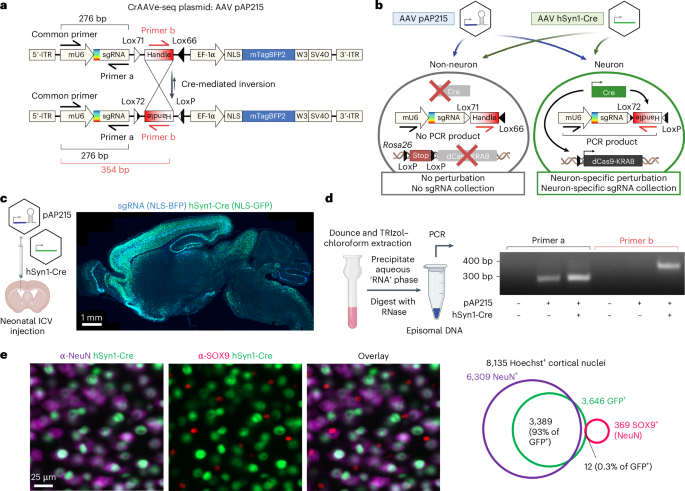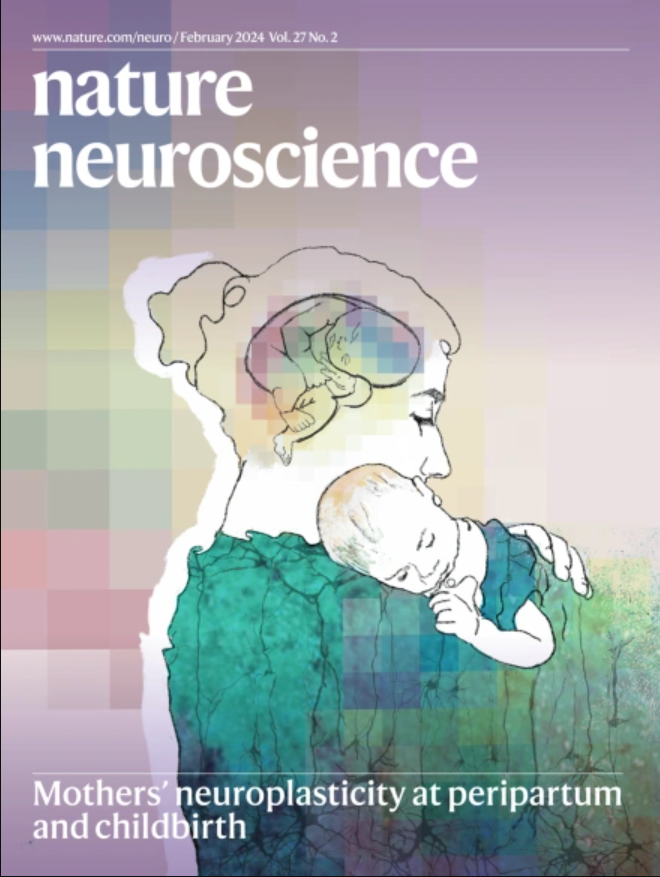CRISPR screening by AAV episome-sequencing (CrAAVe-seq): a scalable cell-type-specific in vivo platform uncovers neuronal essential genes
IF 20
1区 医学
Q1 NEUROSCIENCES
引用次数: 0
Abstract
There is a substantial need for scalable CRISPR-based genetic screening methods that can be applied in mammalian tissues in vivo while enabling cell-type-specific analysis. Here we developed an adeno-associated virus (AAV)-based CRISPR screening platform, CrAAVe-seq, that incorporates a Cre-sensitive sgRNA construct for pooled screening within targeted cell populations in mouse tissues. We used this approach to screen two large sgRNA libraries, which collectively target over 5,000 genes, in mouse brains and uncovered genes essential for neuronal survival, of which we validated Rabggta and Hspa5. We highlight the reproducibility and scalability of the platform and show that it is sufficiently sensitive for screening in a restricted subset of neurons. We systematically characterize the impact of sgRNA library size, mouse cohort size, the size of the targeted cell population, viral titer, and coinfection rate on screen performance to establish general guidelines for large-scale in vivo screens. The authors developed an adeno-associated virus-based high-throughput in vivo CRISPR screening platform for endogenous mouse brain cell types. Using this platform, they define genes and pathways essential for neuronal survival.


通过AAV片段测序(CrAAVe-seq)进行CRISPR筛选:可扩展的细胞类型特异性体内平台揭示神经元必需基因
迫切需要可扩展的基于crispr的遗传筛选方法,这些方法可以应用于哺乳动物体内组织,同时实现细胞类型特异性分析。在这里,我们开发了一种基于腺相关病毒(AAV)的CRISPR筛选平台CrAAVe-seq,该平台结合了cree敏感的sgRNA构建物,用于在小鼠组织中的靶细胞群中进行汇总筛选。我们使用这种方法筛选了两个大型sgRNA文库,这些文库总共针对小鼠大脑中的5000多个基因,并发现了神经元存活所必需的基因,其中我们验证了Rabggta和Hspa5。我们强调了平台的可重复性和可扩展性,并表明它在有限的神经元子集中筛选是足够敏感的。我们系统地表征了sgRNA文库大小、小鼠队列大小、靶细胞群大小、病毒滴度和共感染率对筛选性能的影响,以建立大规模体内筛选的一般指导方针。
本文章由计算机程序翻译,如有差异,请以英文原文为准。
求助全文
约1分钟内获得全文
求助全文
来源期刊

Nature neuroscience
医学-神经科学
CiteScore
38.60
自引率
1.20%
发文量
212
审稿时长
1 months
期刊介绍:
Nature Neuroscience, a multidisciplinary journal, publishes papers of the utmost quality and significance across all realms of neuroscience. The editors welcome contributions spanning molecular, cellular, systems, and cognitive neuroscience, along with psychophysics, computational modeling, and nervous system disorders. While no area is off-limits, studies offering fundamental insights into nervous system function receive priority.
The journal offers high visibility to both readers and authors, fostering interdisciplinary communication and accessibility to a broad audience. It maintains high standards of copy editing and production, rigorous peer review, rapid publication, and operates independently from academic societies and other vested interests.
In addition to primary research, Nature Neuroscience features news and views, reviews, editorials, commentaries, perspectives, book reviews, and correspondence, aiming to serve as the voice of the global neuroscience community.
 求助内容:
求助内容: 应助结果提醒方式:
应助结果提醒方式:


